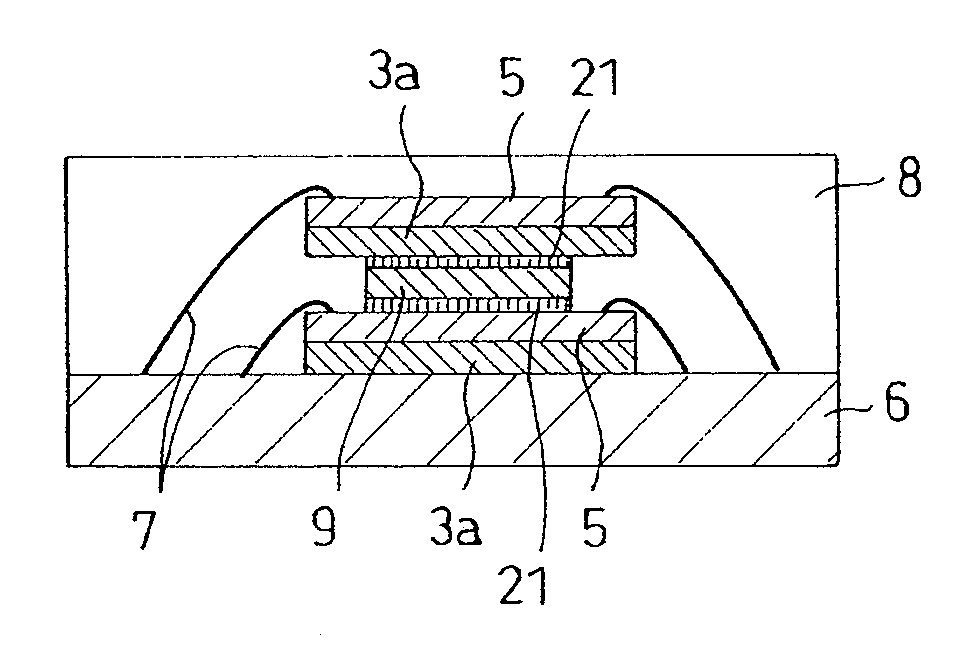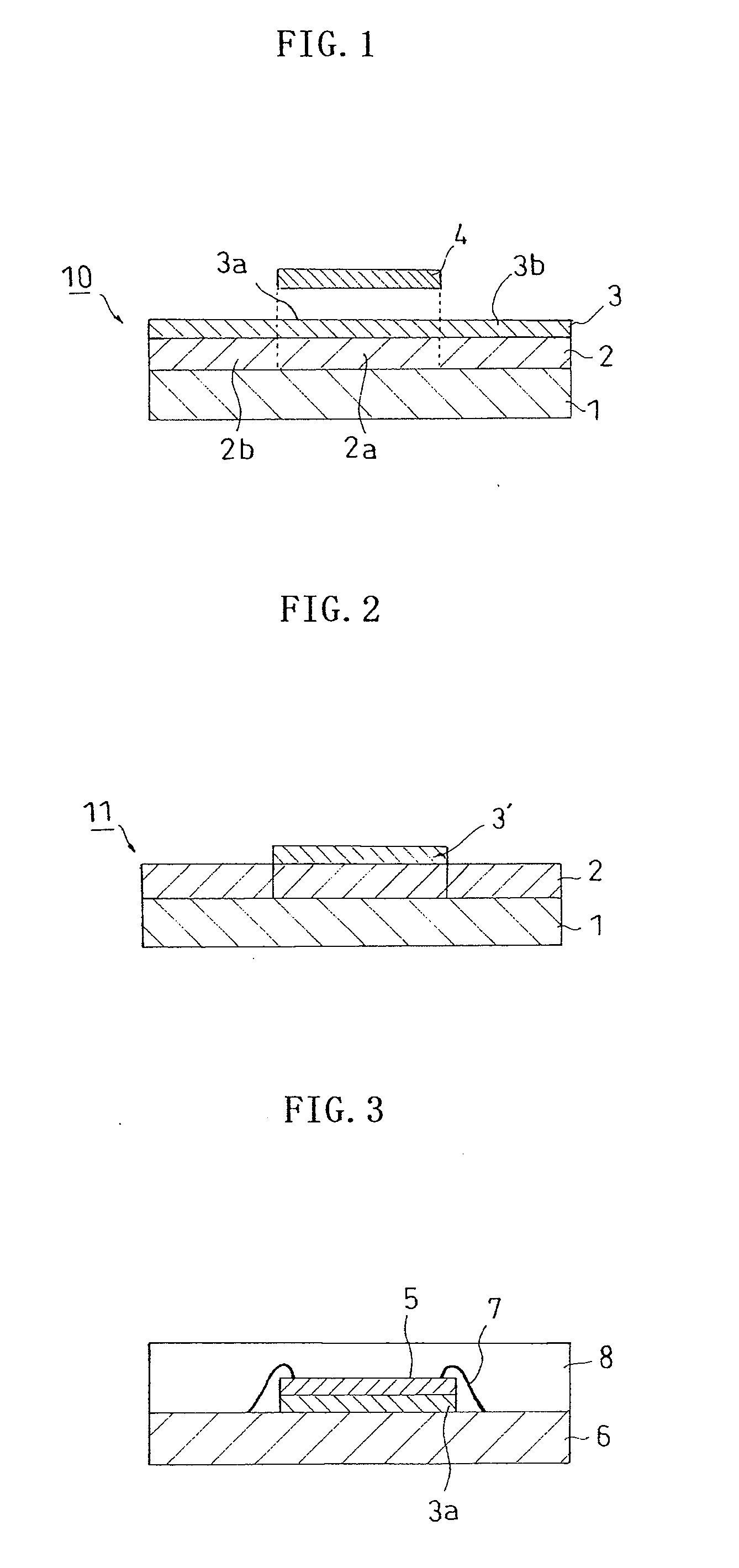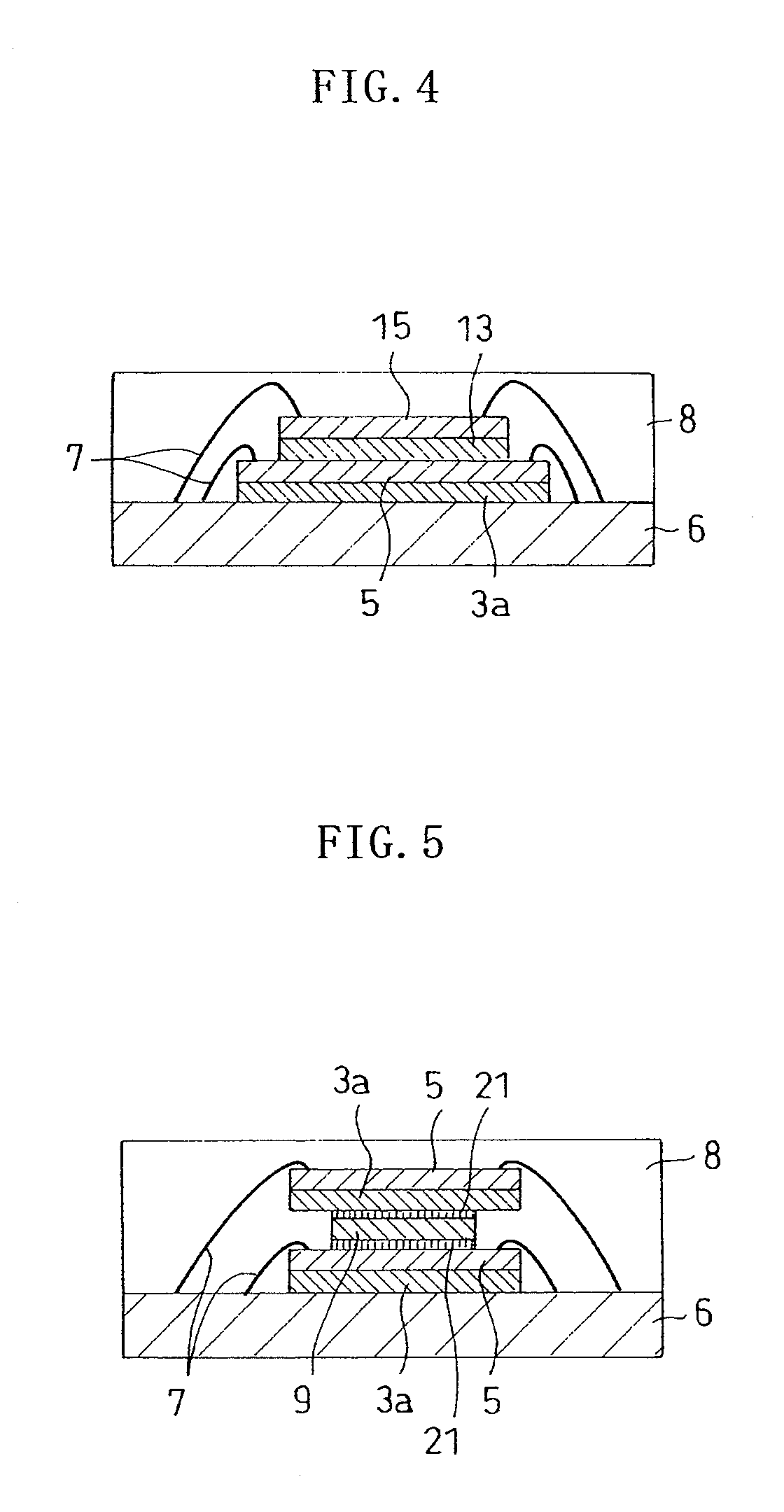Thermosetting die-bonding film
- Summary
- Abstract
- Description
- Claims
- Application Information
AI Technical Summary
Benefits of technology
Problems solved by technology
Method used
Image
Examples
example 1
[0128]An adhesive composition solution having a concentration of 23.6% by weight was obtained by dissolving 50 parts of an epoxy resin (trade name “EPPN501HY” having a melt viscosity of 0.7 Pa·s manufactured by Nippon Kayaku Co., Ltd.), 50 parts of a phenol resin (trade name “MEH7800” having a melt viscosity of 1.2 Pa·s manufactured by Meiwa Plastic Industries, Ltd.), 100 parts of an acrylic copolymer (trade name “REBITAL AR31” having a weight average molecular weight of 700,000 and a glass transition point at −15° C. manufactured by Nogawa Chemical Co., Ltd.), and 70 parts of spherical silica (trade name “S0-25R” having an average particle size of 0.5 μm manufactured by Admatechs Co., Ltd.) into methylethylketone.
[0129]This adhesive composition solution was applied onto a releasing treatment film (a peeling liner) made of a polyethylene terephthalate film having a thickness of 50 μm on which a silicone releasing treatment was performed, and it was dried at 130° C. for 2 minutes. Ac...
example 2
[0130]An adhesive composition solution having a concentration of 23.6% by weight was obtained by dissolving 120 parts of an epoxy resin (trade name “EPPN501HY” having melt viscosity of 0.7 Pa·s manufactured by Nippon Kayaku Co., Ltd.), 120 parts of a phenol resin (trade name “MEH7800” having a melt viscosity of 1.2 Pa·s manufactured by Meiwa Plastic Industries, Ltd.), 100 parts of an acrylic copolymer (trade name “REBITAL AR31” having a weight average molecular weight of 700,000 and a glass transition point at −15° C. manufactured by Nogawa Chemical Co., Ltd.), 0.5 parts of a curing catalyst (trade name “TPP-K” manufactured by Hokko Chemical Industry Co., Ltd.), and 70 parts of spherical silica (trade name “S0-25R” having an average particle size of 0.5 μm manufactured by Admatechs Co., Ltd.) into methylethylketone.
[0131]This adhesive composition solution was applied onto a releasing treatment film (a peeling liner) made of a polyethylene terephthalate film having a thickness of 50 ...
example 3
[0132]An adhesive composition solution having a concentration of 23.6% by weight was obtained by dissolving 145 parts of an epoxy resin (trade name “EPPN501HY” having a melt viscosity of 0.7 Pa·s manufactured by Nippon Kayaku Co., Ltd.), 145 parts of a phenol resin (trade name “MEH7800” having a melt viscosity of 1.2 Pa·s manufactured by Meiwa Plastic Industries, Ltd.), 100 parts of an acrylic copolymer (trade name “REBITAL AR31” having a weight average molecular weight of 700,000 and a glass transition point at −15° C. manufactured by Nogawa Chemical Co., Ltd.), 0.5 parts of a curing catalyst (trade name “TPP-K” manufactured by Hokko Chemical Industry Co., Ltd.), and 70 parts of spherical silica (trade name “S0-25R” having an average particle size of 0.5 μm manufactured by Admatechs Co., Ltd.) into methylethylketone.
[0133]This adhesive composition solution was applied onto a releasing treatment film (a peeling liner) made of a polyethylene terephthalate film having a thickness of 5...
PUM
| Property | Measurement | Unit |
|---|---|---|
| Temperature | aaaaa | aaaaa |
| Percent by mass | aaaaa | aaaaa |
| Percent by mass | aaaaa | aaaaa |
Abstract
Description
Claims
Application Information
 Login to View More
Login to View More - R&D
- Intellectual Property
- Life Sciences
- Materials
- Tech Scout
- Unparalleled Data Quality
- Higher Quality Content
- 60% Fewer Hallucinations
Browse by: Latest US Patents, China's latest patents, Technical Efficacy Thesaurus, Application Domain, Technology Topic, Popular Technical Reports.
© 2025 PatSnap. All rights reserved.Legal|Privacy policy|Modern Slavery Act Transparency Statement|Sitemap|About US| Contact US: help@patsnap.com



